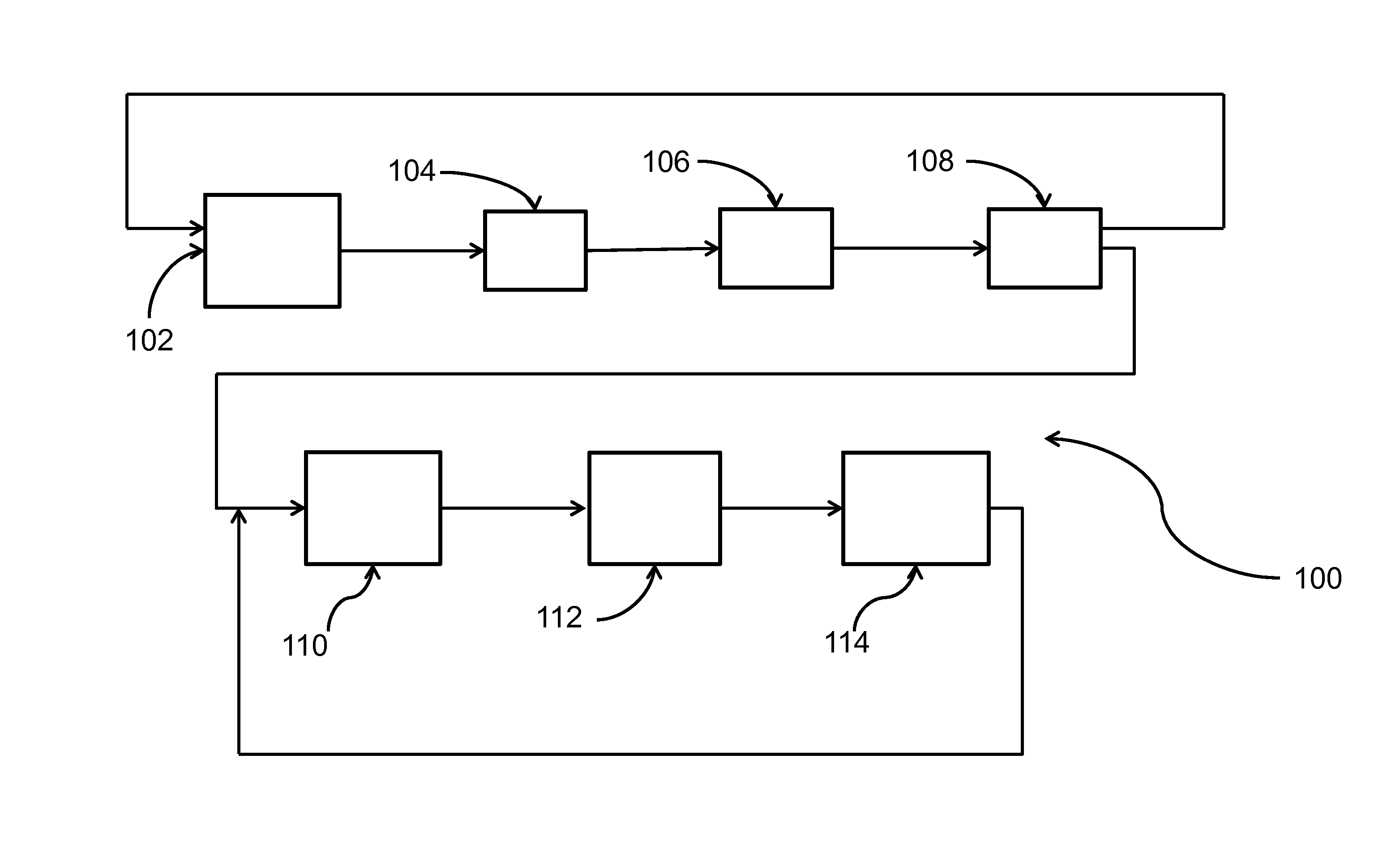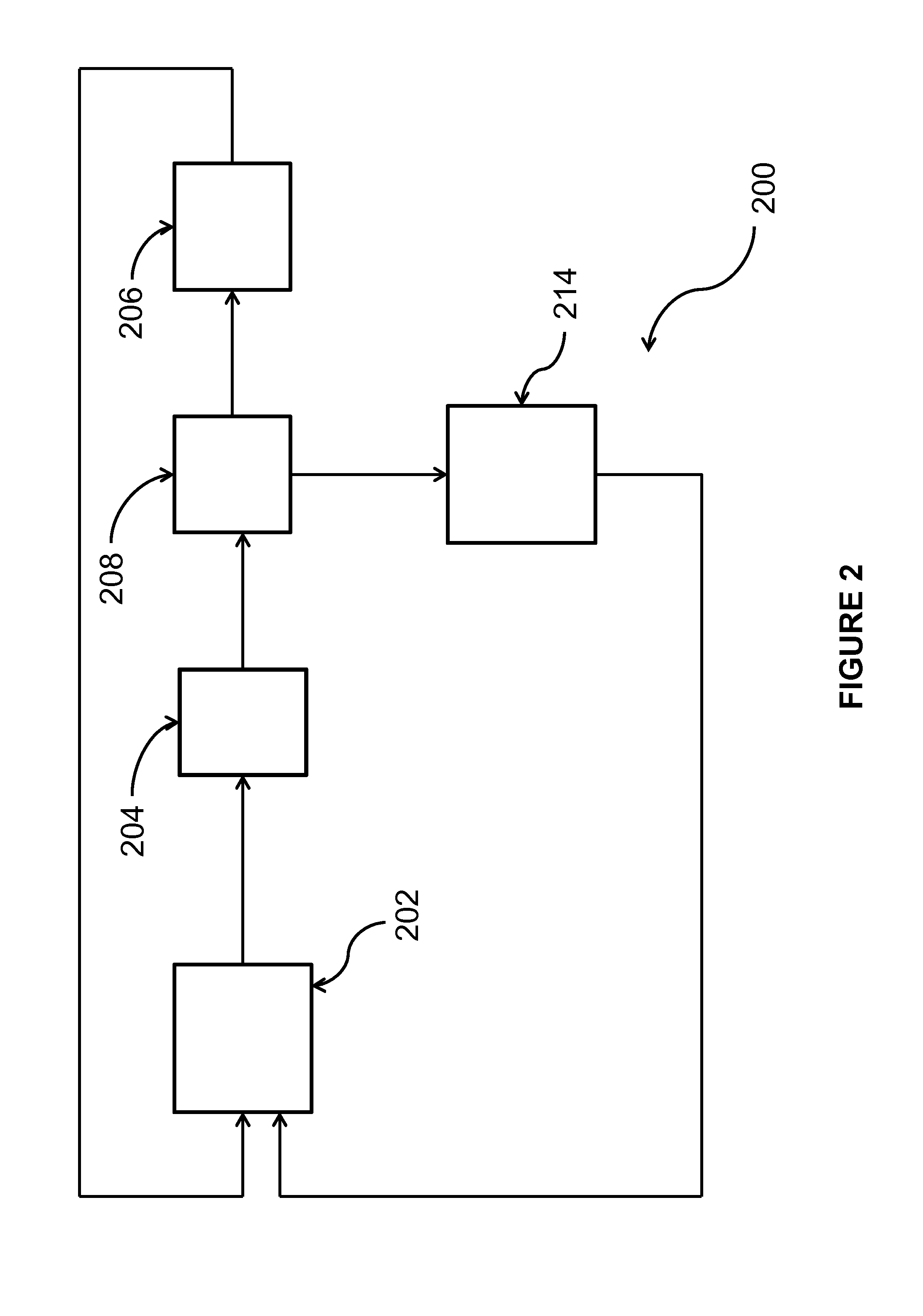Process for the production of chlorinated propenes
a chlorinated propene and propene technology, applied in the field of chlorinated propene production processes, can solve the problems of limited commercial availability of many chlorinated propenes, prohibitively high cost, low production capacity, etc., and achieves fewer steps, fewer reactors, and substantial time and cost savings
- Summary
- Abstract
- Description
- Claims
- Application Information
AI Technical Summary
Benefits of technology
Problems solved by technology
Method used
Image
Examples
example 1
[0071]A flask equipped with a stir bar is charged with tetrabutylammonium chloride (20 mg) and 7 g of a mixture of 1,2,3-trichloropropane and 1,2,2,3-tetrachloropropane. The mixture is flushed with nitrogen and heated to 80° C. An aqueous solution of NaOH (9 mL, 5 N) is added dropwise over several minutes. The mixture is stirred vigorously at 80° C. and sampled after 1 and 3 h. Analysis by 1H NMR spectroscopy indicates the reaction mixture compositions shown in Table 1.
TABLE 1Time (min)060180Substratemol %123 trichloropropane711021223 tetrachloropropane289423 dichloropropene06166123 trichloropropene02028
example 2
[0072]A pressure reactor is charged with a mixture of di- and trichloropropenes (3.35 g) and carbon tetrachloride (45 mL). Stirring (900 rpm) is initiated and the reactor is pressurized with a chlorine / nitrogen mixture (30% Cl2 v / v) to a pressure of ˜140 psig. The chlorine / nitrogen mixture is passed through the reactor at 140 psig for about 30 minutes at 25° C. and a flow rate of 200 sccm. The mixture is then sampled and analyzed by 1H NMR spectroscopy which indicated that 2,3-dichloropropene and 1,2,3-trichloropropene are converted to 1223-tetrachloropropane and 11223-pentachloroprane, respectively, with high selectivity. The results are shown in Table 2, below.
TABLE 2Time (min)030substratemol %123 trichloropropane211123 tetrachloropropane11223 tetrachloropropane46311223 pentachloropropane24112233 hexachloropropane123 dichloropropene665123 trichloropropene285
PUM
| Property | Measurement | Unit |
|---|---|---|
| temperatures | aaaaa | aaaaa |
| pressures | aaaaa | aaaaa |
| pressures | aaaaa | aaaaa |
Abstract
Description
Claims
Application Information
 Login to View More
Login to View More - R&D
- Intellectual Property
- Life Sciences
- Materials
- Tech Scout
- Unparalleled Data Quality
- Higher Quality Content
- 60% Fewer Hallucinations
Browse by: Latest US Patents, China's latest patents, Technical Efficacy Thesaurus, Application Domain, Technology Topic, Popular Technical Reports.
© 2025 PatSnap. All rights reserved.Legal|Privacy policy|Modern Slavery Act Transparency Statement|Sitemap|About US| Contact US: help@patsnap.com



